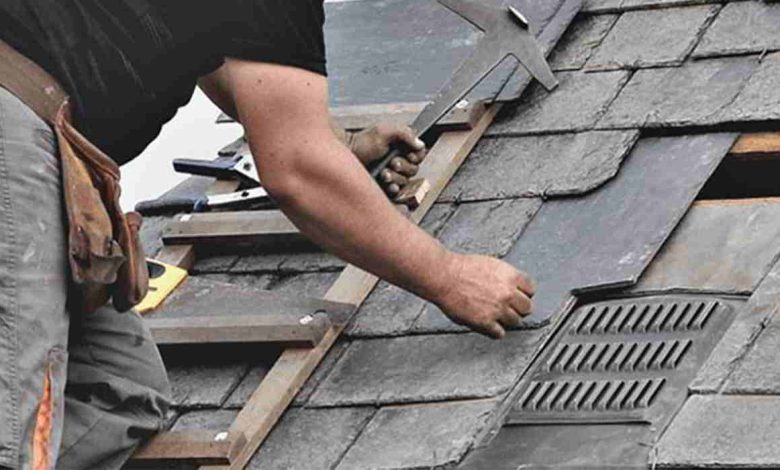The Dublin Roof Installation Checklist: What Every Homeowner Should Know

If you’re planning a New Roof Installation Dublin, congratulations—you’re making a smart investment in your home’s safety, energy efficiency, and long-term value. But before the first tile is laid or scaffold is set up, it’s essential to have a clear game plan.
From choosing materials to understanding permits, hiring contractors to post-installation care, this roof installation checklist will walk you through everything Dublin homeowners need to know.
✅ 1. Understand Why You Need a New Roof
Start by asking: What’s driving your roof replacement or new build?
-
Old roof showing signs of wear (cracks, leaks, missing tiles)
-
Poor insulation or rising energy bills
-
Storm damage or persistent water ingress
-
Planning an extension or new construction
-
Adding property value before a sale
Understanding your goal helps you choose the right materials and budget for your specific situation.
✅ 2. Know Your Roofing Options in Dublin
Dublin’s mix of weather and architecture means not all roofs are created equal. Here are the top options:
-
Natural Slate – Long-lasting and stylish; ideal for heritage homes
-
Clay Tiles – Durable with a timeless aesthetic
-
Concrete Tiles – Cost-effective and widely used in modern builds
-
Metal Roofing (Zinc, Steel, Aluminium) – Sleek, durable, and lightweight
-
Flat Roofing (Felt, Fibreglass, EPDM Rubber) – Great for extensions and garages
Tip: Consider your home’s architectural style and Dublin’s weather before deciding. Also, if you’re in a conservation area, you may be limited to certain materials.
✅ 3. Budget Wisely
A new roof in Dublin can range from €7,000 to over €25,000, depending on the size, complexity, and material.
Make sure your budget includes:
-
Materials (tiles, underlay, insulation, etc.)
-
Labour and installation
-
Scaffolding and waste disposal
-
Planning or building permits
-
VAT and contingency (10–15%)
Don’t go for the cheapest quote. Instead, aim for best value by comparing materials, warranties, and reviews.
✅ 4. Get the Necessary Permissions
In many cases, especially for like-for-like replacements, you won’t need planning permission. However, there are exceptions in Dublin:
-
Protected structures
-
Conservation zones
-
Major changes to roof height or style
-
Adding dormers or skylights
What to do:
-
Contact your local Dublin City Council or Fingal/Dún Laoghaire-Rathdown offices
-
Check with your contractor—they often handle permissions or advise on requirements
✅ 5. Choose a Qualified New Roof Installation Dublin Contractor
Your roofer makes all the difference. Look for:
-
Proven experience with Dublin homes
-
Full insurance and Safe Pass certification
-
References or online reviews
-
Clear, written estimates and contracts
-
Guarantees (10–25 years is standard for new roofs)
Ask questions like:
-
“How many similar projects have you done?”
-
“Will you handle scaffolding and waste disposal?”
-
“What warranty do you offer on labour and materials?”
✅ 6. Check the Roofing Timeline
Depending on size and weather, a roof installation typically takes:
-
New builds: 7–14 working days
-
Replacements: 5–10 working days
Be aware of possible delays due to:
-
Bad weather (common in Dublin)
-
Material delivery times
-
Structural repairs discovered during removal
Plan accordingly, especially if the roofing will impact access to your home or if you’re coordinating with other building work.
✅ 7. Confirm What’s Included in the Job
Before you sign any contracts, make sure the job scope is fully outlined. It should include:
-
Removal of old roofing (if applicable)
-
Structural checks and timber replacements
-
New underlay, battens, insulation, and ventilation
-
Roofing materials (tiles, flashing, ridge caps)
-
Guttering and drainage installation
-
Cleanup and disposal
Tip: Make sure your contractor specifies how they’ll handle unexpected issues (e.g. rot, weather damage, etc.)
✅ 8. Don’t Skimp on Insulation and Ventilation
Insulation and airflow are just as important as the tiles you see from the outside.
-
Roof insulation improves energy efficiency and reduces bills
-
Ventilation prevents damp, mould, and condensation—especially in Dublin’s damp climate
Ensure your roofer includes proper solutions, especially in attic spaces or flat-roof extensions.
✅ 9. Prepare Your Property
Before installation begins:
-
Clear your attic for access
-
Protect valuable items from dust
-
Inform neighbours if scaffolding affects shared spaces
-
Arrange alternative access if needed (especially for full-roof jobs)
Most contractors will manage external prep like scaffolding and skip hire, but it’s good to double-check.
✅ 10. Get Post-Installation Documentation
Once the work is complete, ensure you receive:
-
A full invoice
-
Warranty or guarantee certificates
-
Completion certificate, if required by your lender or insurance
-
A maintenance guide, if applicable
This is crucial if you ever plan to sell your home or make an insurance claim.
✅ Bonus Tip: Schedule Annual Inspections
A new roof doesn’t mean “set and forget.” Dublin’s weather can wear on even the best roofing.
-
Schedule yearly inspections to catch early signs of damage
-
Keep gutters clean to prevent water pooling
-
Trim back trees that may interfere with tiles or drainage
Prevention is cheaper than repairs—especially after a harsh winter.
Final Thoughts
Your roof is one of the most important parts of your home—and one of the most significant investments you’ll make. By following this Dublin-specific checklist, you’ll avoid common pitfalls and ensure your new roof installation is smooth, safe, and built to last.
Whether you’re upgrading a classic Georgian townhouse or building from the ground up, having the right plan and the right team makes all the difference.









